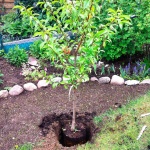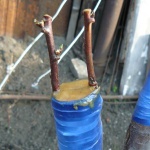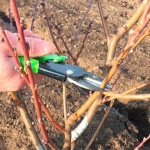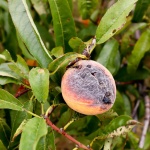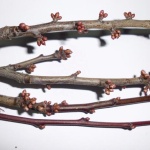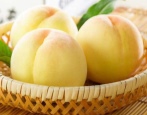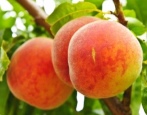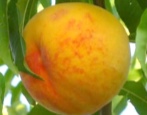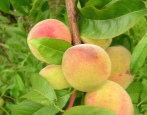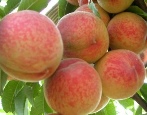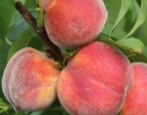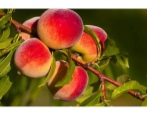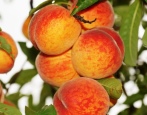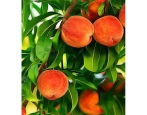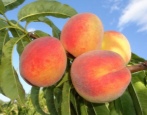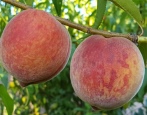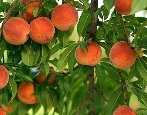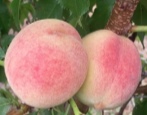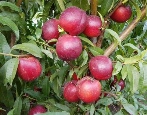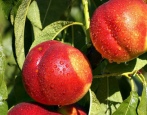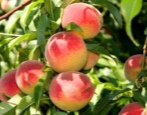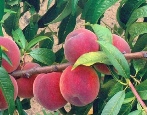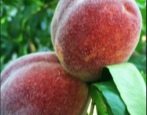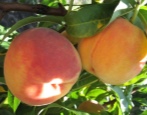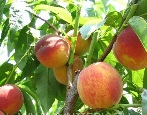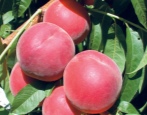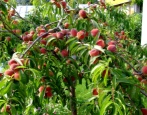
- Self-fertility: self-infertile
- Winter hardiness: high
- Fruit weight, g: 80
- Fruit color: yellow, with pink striped blush
- Leaves: lanceolate, serrated
- Flowers: pink, single or paired, 3-4 cm in diameter, almost sessile
- Fruiting period: August
- Flowering time: February March
- Soil requirement: not picky
- Tree height, m: 2
It is possible to grow peaches in central Russia if you choose the right variety and competently perform agrotechnical work. Winter-hardy varieties take root well, among them the Michurinsky variety stands out for its wonderful taste, excellent characteristics.
Description of the variety
Peach Michurinsky belongs to the winter-hardy variety. However, you need to be careful about the temperatures indicated in the characteristic. If it is written that a tree can withstand up to -40 degrees, then you need to remember that flower buds cannot withstand below -22 degrees. For this reason, prolonged, severe frosts can destroy the crop.
Main characteristics:
tree height - 2 meters;
wide crown;
leaves are narrow, serrate at the edges;
medium branching;
flowers with pink petals, growing in pairs or singly;
flower diameter up to 3-4 cm;
low exactingness to the composition of the soil.
Pollination requires two or more different varieties. Needs regular molding pruning.
Fruit characteristics
The Michurinsky variety has a beautiful pink color with a red blush. Main characteristics:
weight from 80 g;
peel of medium thickness;
the pulp is juicy, fibrous;
the shape is elongated and rounded.
Ripe peaches, completely pubescent, medium-sized pit, well separated from the pulp. Peaches of this variety are stored for a long time, endure long-term transportation in good packaging.
Taste qualities
The fruit pulp of the Michurinsky variety is juicy. The fruits have a pleasant sweet fruity taste, characteristic of peaches, with medium fiber. Peaches have a strong aroma and a pleasant aftertaste. The fruits can be eaten fresh, preserved.
Ripening and fruiting
Ripening of the Michurinsky variety is later, the fruits ripen in August. Fruiting occurs 2-3 years after planting the seedling. Fruiting occurs annually. Experts recommend harvesting in several steps, which will increase the yield of the highest quality fruit.
Yield
From trees aged 10 to 12 years, you can get a harvest of 20 to 50 kg of fruits. In especially fruitful years, you can harvest from 150 to 200 kg of peaches. Increase yields by regular watering, a sunny place for planting a tree, and proper feeding. Cold winters and pests reduce productivity.
Growing and care
Saplings of the Michurinsky variety are planted in early spring. It is important that the buds on the branches do not swell yet. You need to carefully choose the planting site in order to get a good harvest. Peach is a thermophilic plant, so the following rules must be followed:
the place should be well lit by the sun;
a snow fence should be located nearby;
need natural protection from wind, drafts;
preferable place on a hill, away from groundwater;
it is better to plant on loose soils;
a neutral level of soil acidity is desirable.
Planting in clay soil will lead to root rot. To avoid this, it is necessary to make proper drainage. It will help remove excess fluid.
The dimensions of the pit are 50x50x50. At the bottom you need to put a layer of rubble or broken brick, which will become a kind of drainage.In the pit, you need to lay a nutrient mixture in which there should be a bucket of humus, peat and river sand. 2 buckets of ordinary earth are added to the mixture.
When planting several trees next to each other, you must maintain a distance of 1.5 meters between them. Before planting, the root system of the seedling is soaked in potassium permanganate to reduce the risk of developing diseases, the plant is set in the middle of the pit. A peg is placed next to it to fix the tree. The seedling is covered with soil, tamped near the trunk, make a hole, pour 2 buckets of water.
Adaptation of Michurinsky lasts 2 weeks. During this period, it is necessary to water the seedling once a week. It takes 2-3 buckets of water at a time. Next, you need to go to regular watering once every 20 days. In hot, dry weather, water the peach more often.
Pruning should be carried out immediately after planting, this will increase the yield. The branches should be shortened so that the crown forms a ball.
Despite the winter hardiness, it is better to cover the tree in the middle lane and to the north for the winter. To do this, use foam, plastic wrap. A hole is made in the entire structure for ventilation. In early spring, the winter shelter needs to be disassembled little by little to avoid mold growth.
